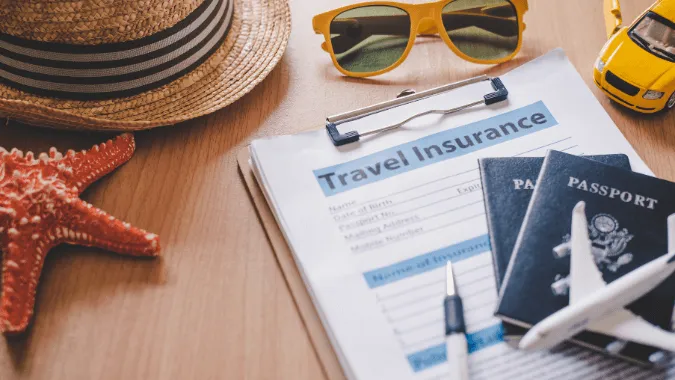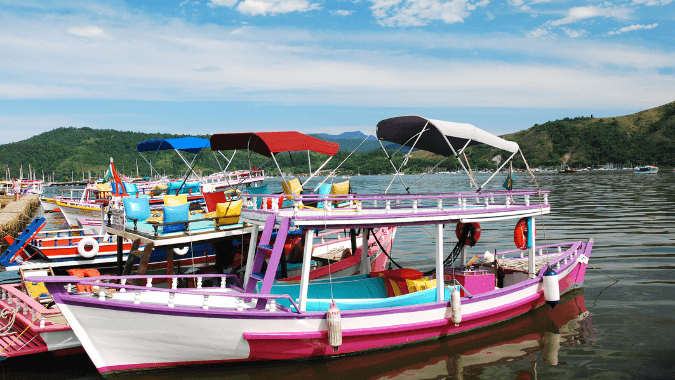Alternative Routes from Brazil to Argentina for Visitors of the FIFA World Cup 2014
During the 2014 World Cup, plenty of people wishing to make the most of their time in South America will fly from the host country Brazil over to its neighbour, Argentina. Even though the two countries are side by side, this is usually not a cheap trip, however there are several ways you can avoid spending quite as much. We’ve provided four alternative routes from Brazil to Argentina so you can save your pennies and use them to enjoy your time in Argentina instead.
Routes from Brazil to Argentina
1) Via Uruguay
It’s possible to catch a bus from Sao Paulo to Uruguay’s capital, Montevideo with one of two companies: EGA and TTL, both which leave at 11.30pm and arrive at 4.30am two days later. Passengers have two seating options, first class and economy, with the main difference being considerably more room in first class. Meals and snacks are provided on board and in between, you will be offered alcoholic beverages such as whisky and martini (small helpings of which should certainly enable you to sleep better!) Whereas EGA is slightly more comfortable, it charges the same amount as TTL, so we would advise you to travel with them, although both companies provide more or less the same service. A third option, if you don’t mind changing buses, is to get off at Porto Alegre and catch a bus from there, which will further enable you to save money and as they run daily, you won’t have to wait long. Once you reach Montevideo, you can catch a bus or ferry to Buenos Aires and hey presto! You’ve made it to Argentina. Equally, if you have time to spare in Uruguay, why not spend a few days in Montevideo before visiting the delightfully quaint town of Colonia, located just an hour away from Buenos Aires.
[caption id="attachment_2250" align="aligncenter" width="600"] The picturesque town of Colonia / source[/caption]
The picturesque town of Colonia / source[/caption] 2) Via Porto Alegre, southern Brazil’s largest city
Porto Alegre, one of the host cities for the World Cup, is the capital city of Rio Grande do Sul and the largest in the south of Brazil. Complete with grand neoclassical architecture, vibrant arts and a thriving alternative music scene, this isn’t a bad place to kill a few hours before making the journey across to Argentina. There are daily bus services to Porto Alegre from several cities in Brazil, such as Rio de Janeiro, Curitiba and Florianopolis. You’ll find the long distance bus station in the downtown, from where you can catch a direct bus to Buenos Aires, with a journey time of approximately eighteen hours. Just be careful and keep watch over your possessions in this area though, as it can be quite seedy and, like most other Brazilian cities, is not absent of crime.
[caption id="attachment_6847" align="aligncenter" width="640"] The Beira-Rio stadium in Porto Alegre / source[/caption]
The Beira-Rio stadium in Porto Alegre / source[/caption] 3) Crossing Puerto Iguazú with a trip to Iguazú Falls
The main border point used by those going from Brazil across to Argentina (and vice versa) is Puerto Iguazú, a twenty-hour bus ride from Buenos Aires. This is the most popular route as it enables tourists to see the breathtaking Iguazu Falls from both sides, a ‘must-do’ for anyone visiting either country. You can catch a public bus from Foz do Iguaçu in Brazil and get down at ‘Tevo de Argentine’ (the roundabout before the border crossing). From there, it is a short walk to the border. After going through the Brazilian side, just wait for a second bus to Puerto Iguazú, which will take you to the Argentine border, and from there it’s on to the port. Make the most of your time in Iguazú with a tour to Iguazú Falls, such as the Great Adventure Tour or the Starlit Night Cruise Tour.
[caption id="attachment_6848" align="aligncenter" width="640"] Iguazu Falls on the Argentinean side / source[/caption]
Iguazu Falls on the Argentinean side / source[/caption] 4) From Uruguaiana to Paso de los Libres
Further south, you can cross from Uruguaiana, one of Brazil’s most important cattle centres, to the town of Paso de los Libres in the Corrientes province. The two are connected by a 1,400 metre-long bridge which crosses Rio Uruguai. Bus services from Uruguaiana are excellent and from Paso de los Libres, there are equally good services to Buenos Aires, amongst other destinations, which run daily.Why not make a stop at Esteros del Ibera, one of the largest nature reserves in the country, which is home to a huge variety of wildlife. You can get here by taking a separate bus from Paso to Mercedes, from where it’s a two to three hour trip in a colectivo.
[caption id="attachment_6849" align="aligncenter" width="640"] Esteros del Ibera: one of Argentina's largest nature reserves / source[/caption]
Esteros del Ibera: one of Argentina's largest nature reserves / source[/caption]
You can read more articles regarding the 2014 World Cup, such as budget-friendly alternatives to hotels and the best ways to travel around Rio de Janeiro.
Visit our website to book tours and activities in Argentina.
By: Milly Day - English Content Manager For: Argentina4u
-
Exciting 4x4 route: São Luís and FortalezafromUS$1,014
-
Vila Gale Mares Resort All InclusivefromUS$100
-
Ecotourism in Chapada DiamantinafromUS$672
-
All inclusive Vila Gelé Cumbuco ResortfromUS$999
-
Full Day Cafayate Tour from SaltafromUS$68
-
Transfer Aeroparque - Buenos AiresfromUS$46
-
-
Transfer Ezeiza - AeroparquefromUS$91
-
-
Excursion to El Chaltén from El CalafatefromUS$153
-
-
-
-
-
-
-
-
-
-
-



